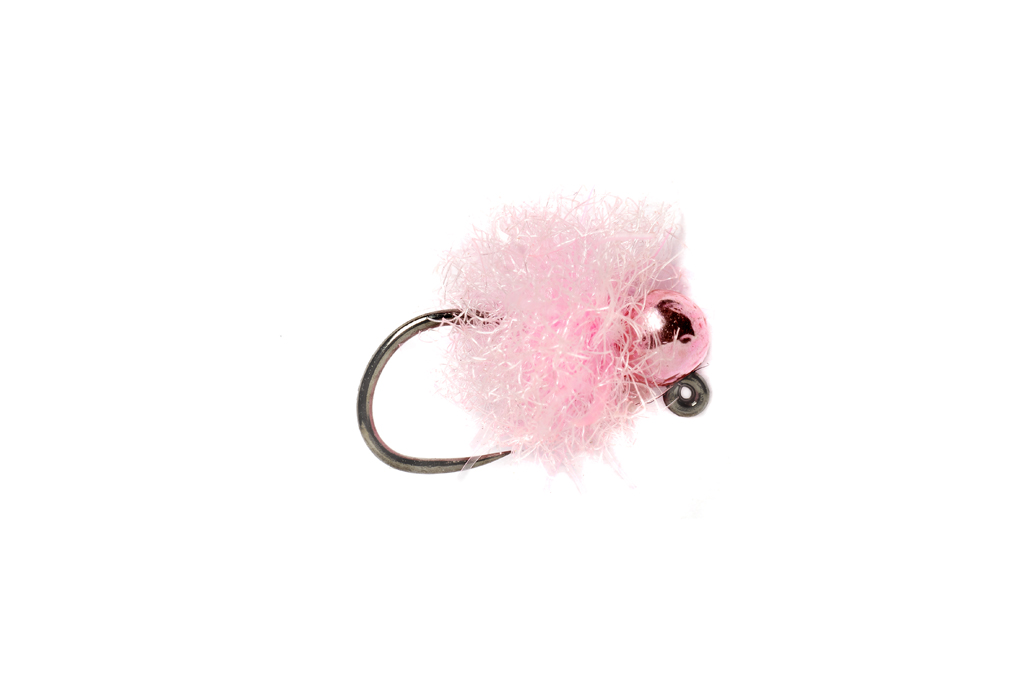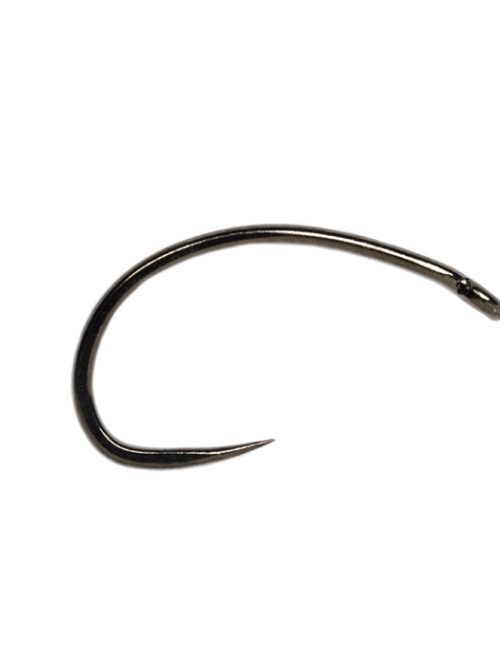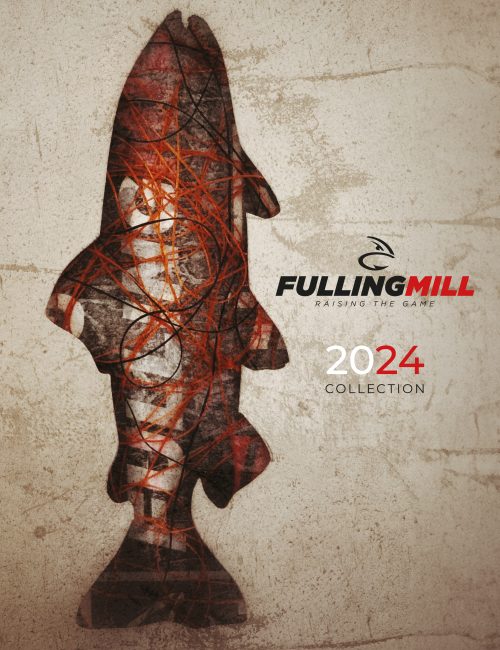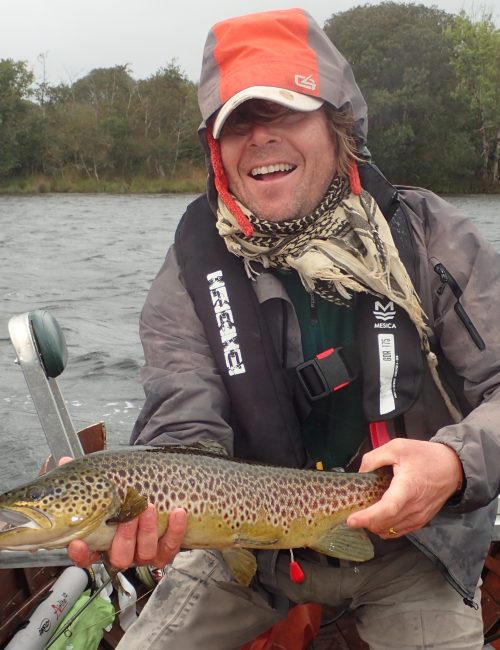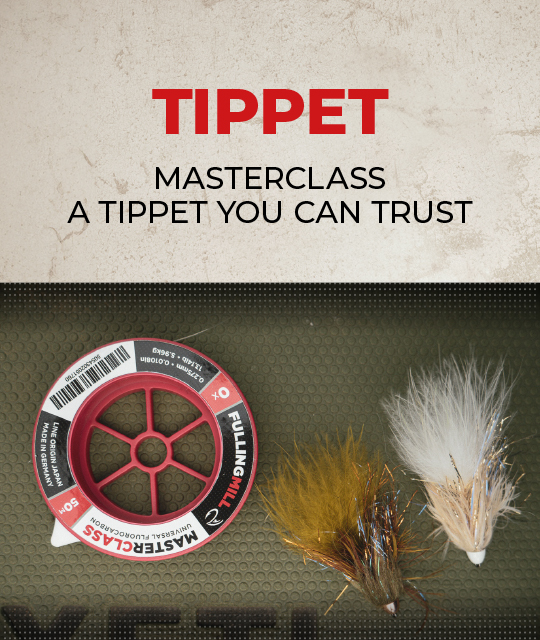Photo by Bent Water Anglers.
It is usually around this point, right here, smack dab in the middle of February, when I begin to wonder why I ever entertain the idea of winter fishing. For the past week, temps in the Northeast have been hovering steadily in the single digits. The local rivers are well anchored with ice. Memories of warmer, far more productive waters begin to manifest. But, rather than dwell on the subpar conditions, I figured I’d share with you a few flies to help make the most of your winter fishing if you decide to get out.

Photo by Bent Water Anglers.
Why Winter Fish?
I won’t lie, fly fishing is tough this time of year. Routine tasks require extra effort and things that are seemingly simple in warmer months can be monumentally difficult. That said, there are a few distinct advantages to chasing trout in winter. The first, and my personal favorite, is the lack of other anglers. On most days you can find yourself all alone on the water, even in the spots that usually see heavy traffic. In addition, with typically lower flows, winter can be a great time to truly get to know the makeup of your local waters. Troughs, seams, pools etc. become far more apparent with lower levels. This is also a great time to work on your strike detection and technique. Since trout can be quite lethargic in colder weather, often eats are far more subtle and both cast placement and drift are crucial to success.
For more on winter nymphing technique, check out this piece by Simon Robinson.
The Best Flies for Winter Fishing
Over the years I have found that having a few of the following flies in your box can greatly increase your success while winter fishing.

Photo by Bent Water Anglers.
Squiminator
Love them or hate them, flies like the Squiminator catch fish. Because winter can be somewhat void of hatches and readily available food sources, flies like this are a great choice to provoke even the most stubborn trout as they mimic a “protein shake” in otherwise empty waters. As a result, they serve as great prospecting patterns to identify where fish are holding.

Nemec Stone
Stoneflies are a consistent food source on almost every river I fish. Though they are less common in winter, they are certainly still there. A great time to fish stones is after a thaw and or rise in water level. The increase in current will typically disrupt the substrate making stone flies more readily available. I also really like the Nemec stone for the slower pools and soft seams that trout often hold in during winter. I find that the detail of this pattern can fool even the longest look from trout holding in these waters and therefore makes it incredibly versatile.
First photo by Bent Water Anglers.
Mop Fly
While this pattern is close in reputation to the Squirminator, most discerning anglers that have fished a mop know how effective it can be. This is another great pattern for maximizing winter fishing as it mimics a larger food source. It’s a great go to, especially when there is limited available information as to what the trout are feeding on, which is a common winter situation.
Spanish Bullet
This is a great pattern to mimic some of the smaller offerings found in winter. Whether it’s BWO’s, midges or caddis this is my go-to for imitating smaller insects.
Slush Egg
Going fishing in winter without an egg pattern is almost as crazy as going winter fishing. Eggs are potentially one of the most consistent winter food sources on any trout stream. What I love about the Slush egg is that its tied on a jig hook and therefore a great pattern to fish on or near the bottom with far less worrying about snagging.
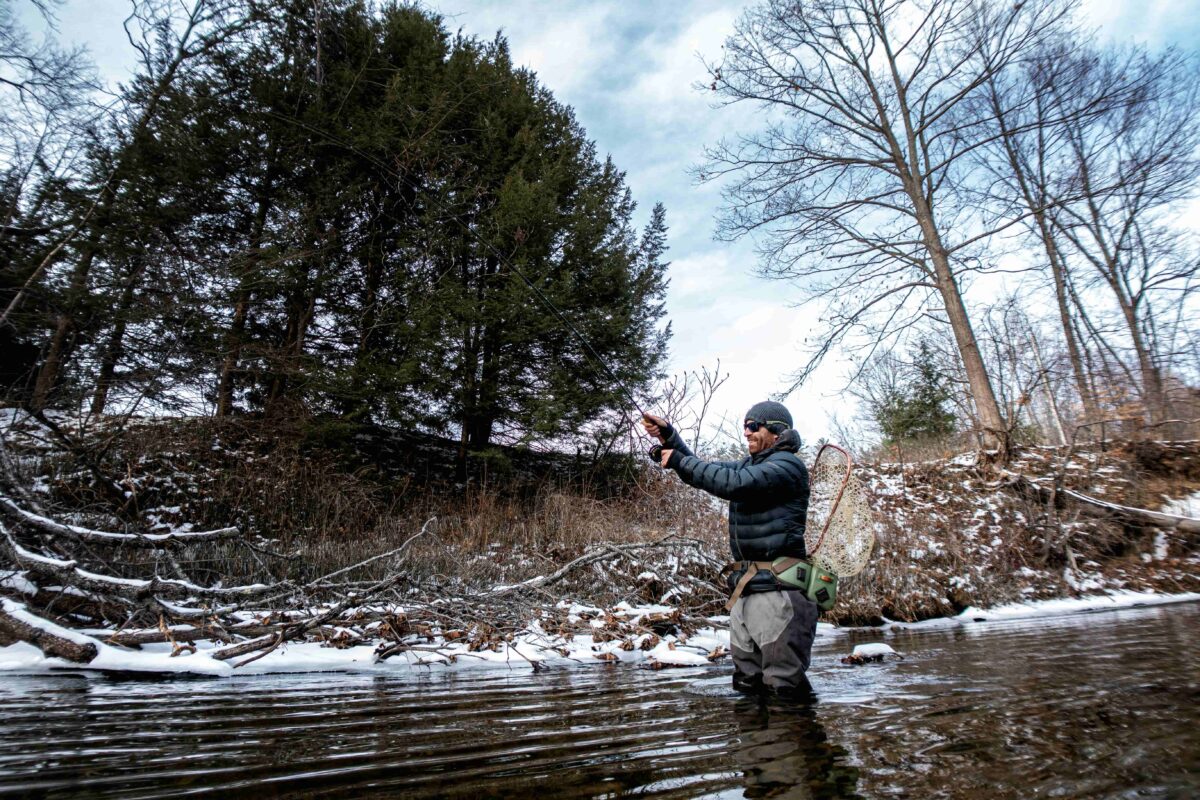
Photo by Bent Water Anglers.
I hope that whether you’re heading out for your first winter excursion or are a seasoned snow and ice fly warrior that you found this helpful. If you do decide to go out, before your next trip be sure to check out this excellent piece on winter handling. It’s important that you treat winter fish with great care!
Hope to see you on the water soon!
Sean








